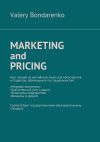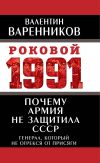
Автор книги: Нина Пусенкова
Жанр: Иностранные языки, Наука и Образование
сообщить о неприемлемом содержимом
Текущая страница: 9 (всего у книги 44 страниц) [доступный отрывок для чтения: 11 страниц]
The SWOT Matrix
A firm should not necessarily pursue the most lucrative opportunities. Rather, it may have a better chance at developing a competitive edge by identifying a fit between the firm’s strengths and upcoming opportunities. In some cases, the firm can overcome a weakness in order to prepare itself to pursue a compelling opportunity.
To develop strategies that take into account SWOT profile, a matrix of these factors can be constructed.
SWOT Matrix

– S-O strategies pursue opportunities that are a good fit to the company’s strengths.
– W-O strategies overcome weaknesses to pursue opportunities.
– S-T strategies identify ways that the firm can use its strengths to reduce its vulnerability to external threats.
– W-T strategies establish a defensive plan to prevent the firm’s weaknesses from making it highly susceptible to external threats.
Source: www.quickmba.com
The Value Chain
To analyze the specific activities through which firms can create a competitive advantage, it is useful to model the firm as a chain of value-creating activities. Michael Porter identified a set of interrelated generic activities common to a wide range of firms. The resulting model is known as the value chain:
Primary Value Chain Activities
Inbound logistics > Operations > Outbound logistics > Marketing & Sales > Service
The goal of these activities is to create value that exceeds the cost of providing the product or service, thus generating a profit margin.
– Inbound logistics include the receiving, warehousing, and inventory control of input materials.
– Operations are the value-creating activities that transform the inputs into the final product.
– Outbound logistics are the activities required to get the finished product to the customer, including warehousing, order fulfillment, etc.
– Marketing & Sales are those activities associated with getting buyers to purchase the product, including channel selection, advertising, pricing, etc.
– Service activities are those that maintain and enhance the product’s value including customer support, after-sale services, etc.
Primary activities may be vital in developing a competitive advantage. For example, logistics activities are critical for a provider of distribution services, and service activities may be the key focus for a firm offering on-site maintenance contracts for office equipment. These five categories are generic and include specific activities that vary by industry.
Support Activities
The primary value chain activities described above are facilitated by support activities. Porter identified four generic categories of support activities, the details of which are industry-specific:
– Procurement – the function of purchasing the raw materials and other inputs used in the value-creating activities.
– Technology Development – includes R&D, process automation, and other technology development used to support the value-chain activities.
– Human Resource Management – the activities associated with recruiting, development and compensation of employees.
– Firm Infrastructure – includes activities such as finance, legal, quality management, etc.
Support activities are often viewed as «overhead», but some firms successfully have used them to develop a competitive advantage, for example, to develop a cost advantage through innovative management of information systems.
Value-Chain Analysis
In order to better understand the activities for a competitive advantage, one can begin with the generic value chain and then identify the relevant firm-specific activities. Process flows can be mapped, and these flows used to isolate the individual value-creating activities.
Once the discrete activities are defined, linkages between activities should be identified. A linkage exists if the performance or cost of one activity affects that of another. Competitive advantage may be obtained by optimizing and coordinating linked activities.
The value chain also is useful in outsourcing decisions. Understanding the linkages between activities can lead to more optimal make-or-buy decisions that can result in either a cost advantage or a differentiating advantage.
The Value System
The firm’s value chain links to the value chain of upstream suppliers and downstream buyers. The result is a larger stream of activities known as the value system. The development of a competitive advantage depends not only on the firm-specific value chain, but also on the value system of which the firm is a part.
Source: www.quickmba.com
PEST Analysis
A PEST Analysis is an analysis of the external macro-environment that affects all firms. PEST is an acronym for the Political, Economic, Social and Technological factors of the external macro-environment. Such external factors are usually beyond the firm’s control and sometimes present themselves as threats. For this reason, some say that «pest» is an appropriate term for these factors. However, changes in the external environment also create new opportunities and the letters sometimes are rearranged to construct the more optimistic term of STEP analysis.
Many macro-environmental factors are country-specific and a PEST analysis will need to be performed for all countries of interest.
Political Analysis
–Political stability
–Risk of military invasion
–Risk of nationalization
–Legal framework for contract enforcement
–Intellectual property protection
–Trade regulations & tariffs
–Favored trading partners
–Anti-trust laws
–Pricing regulations
–Taxation system – tax rates and incentives
–Wage legislation – minimum wage and overtime
–Work week
–Mandatory employee benefits
–Industrial safety regulations
–Product labeling requirements
Economic Analysis
–Type of economic system in countries of operation
–Government intervention in the free market
–Comparative advantages of host country
–Exchange rates and stability of host country currency
–Efficiency of financial markets
–Infrastructure quality
–Skill level of workforce
–Labor costs
–Business cycle stage (e.g. prosperity, recession, recovery)
–Economic growth rate
–Disposable income
–Unemployment rate
–Inflation rate
–Interest rates
Social Analysis
–Demographics
–Class structure
–Education
–Culture (gender roles, etc.)
–Entrepreneurial spirit
–Attitudes (health, environmental consciousness, etc.)
–Leisure interests
Technological Analysis
–Recent technological developments
–Technology’s impact on product offering
–Impact on cost structure
–Impact on value chain structure
–Rate of technological diffusion
The number of macro-environmental factors is virtually unlimited. In practice, the firm must prioritize and monitor those factors that influence the industry. Even so, it may be difficult to forecast future trends with an acceptable level of accuracy. In this regard, the firm may turn to scenario planning techniques to deal with high level of uncertainty in important macro-environmental variables.
Source: www.netmba.com
Essential Vocabulary
1. SWOT Analysis – анализ сильных и слабых сторон, возможностей и угроз
2. expertise n – специальные знания, компетентность, эрудиция; экспертиза
3. proprietor n – собственник, владелец
proprietary a – собственнический, составляющий собственность
4. know-how n – ноу-хау
5. high-grade a – высокого уровня, высокого качества
6. shift n – смена, часы работы; сдвиг, перемещение; средство
shift v – сдвигаться, перемещаться; менять, изменять; убирать
7. substitution n – замена, замещение, субституция
substitute v – заменять
substitute a – взаимозаменяемый, субститут
8. profile n – профиль, очертание; краткий очерк, краткое описание
9. value chain – цепочка ценности
10. logistics n – логистика, материально-техническое снабжение
11. warehouse n – склад
12. after-sale services – послепродажное обслуживание
13.specific a – специфический, удельный, особый, характерный; конкретный, определенный
14. support activities – вспомогательная деятельность
15. procurement n – закупки, приобретение, материально-техническое обеспечение; контракт на поставку
procure v – доставать, добывать, приобретать, закупать, снабжать
16. raw materials – сырье
17. Human Resource Management (HRM) – управление трудовыми ресурсами
18. recruitment n – набор кадров, комплектование личным составом
recruiter n – агент по набору кадров
recruit v – набирать кадры
19. overheads n – накладные расходы
20.discrete а– прерывистый, дискретный, разрозненный; оторванный, отвлеченный
21. make-or-buy decision – решение производить или покупать
22. differentiation n – дифференциация, дифференцирование, установление различий, разделение; специализация
differentiate v – дифференцировать, устанавливать различия
23. upstream n – в нефтяном и газовом бизнесе – геологоразведка и добыча, в более широком смысле – производство (товаров) или генерирование (электроэнергии)
24. downstream n – в нефтяном и газовом бизнесе – переработка и сбыт, в более широком смысле – дистрибуция и сбыт
25. PEST (Political, Economic, Social, Technological) analysis – анализ политических, экономических, социальных и технологических факторов
26. enforcement n – давление, принуждение; осуществление; наблюдение за проведением в жизнь, принудительное взыскание
enforcer n – лицо, претворяющее закон в жизнь; служитель правопорядка
enforce v – принуждать, взыскивать; приводить в исполнение, проводить в жизнь
enforceable a – осуществимый, поддающийся проведению в жизнь; обеспеченный правовой санкцией, имеющий исковую силу
27. intellectual property – интеллектуальная собственность
28. anti-trust law – антитрестовский закон
29. overtime n – сверхурочная работа
30. label n – ярлык, наклейка, этикетка, бирка, марка
labeling n – классификация, наклеивание этикетки или ярлыка, маркирование
label v – наклеивать этикетку или ярлык, маркировать
31. intervention n – интервенция, вмешательство
intervene v – вмешиваться
32. host country – принимающая страна
33. exchange rate – обменный (валютный) курс
34. business cycle – цикл деловой активности
35. prosperity n – процветание
prosper v – процветать
prosperous a – процветающий
36. recovery n – подъем экономической активности после рецессии; амортизация издержек, возмещение; взыскание; остаточная стоимость фиксированного актива после амортизации; повышение курса (валюты или ценных бумаг); оживление
recover v – оживляться; получать обратно; выздоравливать; наверстывать, возмещать; выправляться; излечивать; собирать; взыскивать; выигрывать (дело)
recoverable a – возместимый, поправимый, излечимый; извлекаемый (о запасах)
37. disposable income – располагаемый доход
38. environmental consciousness – экологическая сознательность
39. diffusion n – диффузия, проникновение, распространение, рассредоточение
diffuse v – распространяться, рассредоточиваться
Exercise 1. Answer the following questions.
1. Why is SWOT Analysis useful in the strategic planning process? 2. What can be considered a company’s strength? 3. What are its weaknesses and how do they interact with strengths? 4. What opportunities may the external environment analysis reveal? 5. What changes in the external environment may present threats to the firm? 6. How can a firm develop its competitive edge? 7. What are the activities that comprise the value chain? 8. What specific activities can five generic activities include? 9. What are the support activities and what is their role in value creation? 10. For what decisions is the value chain useful? 11. What is the role of the value system? 12. What is the essence of the PEST Analysis? 13. Why should PEST Analysis be performed for all countries of interest? 14. Is it possible to accurately forecast future trends?
Exercise 2. Explain the meaning of the word «profile» in the following contexts and make your own sentences with this word along the same lines.
1) Kakha Bendukidze, a high-profile business executive, went into politics.
2) Information from competitor analysis can be compiled into a response profile of possible moves that might be made by the competitor.
3) Because of the high level of risk generally associated with the emerging markets, investment recommendations of financial advisors are limited to clients with an appropriate aggressive investment profile.
4) Recently, Russian company share prices have been going mostly up, while their risk profile has been coming down.
Exercise 3. Make a SWOT Analysis of Gazprom, the best-known Russian company. You can get all necessary information at www.gazprom.ru.
Exercise 4. A foreign company wants to launch business in Russia. You are strategic advisor to its CEO, and he asks you to perform a PEST Analysis of the country and make a conclusion about threats and opportunities of doing business in Russia.
Exercise 5*. Fill in the blanks using terms given below.
Competitor Analysis
In formulating………., managers must consider the strategies of the firm’s competitors. While in highly………… commodity industries the moves of any single……… may be less important, in……… industries competitor analysis becomes a vital part of…………
Competitor analysis has two primary activities: 1) obtaining information about important competitors, and 2) using that information to…….. competitor behavior. The……… of competitor analysis is to understand:
–with which competitors to compete,
–competitors’ strategies and planned actions,
–how competitors might react to a firm’s actions,
–how to influence competitor’s behavior to the firm’s own advantage.
Casual knowledge about competitors usually is insufficient in competitor analysis. Rather, competitors should be analyzed systematically, using organized competitor……….-gathering to compile a wide…….. of information so that well informed………….. can be made.
Competitor Analysis Framework
Michael Porter presented a framework for analyzing competitors. This framework is based on the following four key aspects of a competitor:
–competitor’s objectives,
–competitor’s assumptions,
–competitor’s strategy,
–competitor’s capabilities.
Objectives and assumptions are what……… the competitor, and strategy and capabilities are what the competitor is doing or is capable of doing. Information from an analysis of the competitor’s objectives, assumptions, strategy, and capabilities can be compiled into a………… of possible moves that might be made by the competitor. This profile includes both potential……….. and………. moves. The specific moves and their expected strength can be………. using information gleaned from the analysis.
The result of the competitor analysis should be an improved ability to predict the competitor’s behavior and even to……….. it to the firm’s advantage.
Source: www.netmba.com
Terms:
leverage, player, intelligence, strategy decisions, range, predict, business strategy, response profile, fragmented, estimated, offensive, concentrated, strategic planning, goal, drive, defensive
Exercise 6. Translate into English.
Что могут и чего не могут управленческие модели (продолжение урока 9)
И, наконец, наиболее существенный риск – использование моделей в качестве дани существующей моде. Порой отдельный труд авторитетного эксперта способен вызвать массовый ажиотаж в умах руководителей компаний самых разнообразных отраслей экономики. Наглядный пример – диверсификация. По мере ее популяризации компании в массовом порядке принялись усиленно расширять свое присутствие как в соседних, так и в отдаленных отраслях экономики с целью диверсифицировать свои риски и приумножить свою прибыль за счет возникающей синергии. Ряд таких компаний превратился в громоздкие неповоротливые структуры, неспособные оперативно реагировать на текущие экономические реалии. В итоге на смену принципу распыления внимания на все и всех пришла мода на противоположную теорию «ключевых компетенций». Руководствуясь новыми принципами, все филиалы и подразделения, не задействованные в ключевом направлении бизнеса, спускались с молотка либо ликвидировались. Отдельные компании сократили свою деятельность до уровня головной организации, отдав на аутсорсинг все прочие направления, несмотря на то что многие из них являлись ключевыми в свете развития основного вида бизнеса. Лишь позже, по прошествии определенного периода времени, было обнаружено, что управление аутсорсинговыми процессами не в пример сложнее управления теми же процессами, происходящими внутри одной компании.
Вывод: нет универсальных моделей, подходящих всем и в любой ситуации.
Пока только одни недостатки. А как насчет сильных сторон управленческих моделей? Несмотря на перечисленные выше недостатки, в современном быстро изменяющемся деловом мире управленческие модели способны стать неоценимым подспорьем для менеджмента в плане организации процесса систематического анализа информационных потоков. Единственное, что следует помнить, – управленческие модели не в состоянии самостоятельно принимать решения: они лишь обеспечивают аналитическую базу, способствующую принятию обоснованных решений.
Время от времени имеет смысл пересматривать набор моделей, используемых в рамках анализа деятельности компании или отрасли. Такую инвентаризацию целесообразно осуществлять посредством «мозгового штурма», позволяющего свести воедино различные точки зрения руководителей раздельных отделов или подразделений компании. При этом следует помнить, что, если вдруг оказывается, что какая-либо модель не вполне приемлема для описания некой конкретной ситуации (например, модель пяти сил Портера для анализа темпов роста отрасли в экономике), это вовсе не означает, что данная модель неприемлема для организации в принципе. Комбинация различных моделей позволяет компенсировать недостатки одних за счет достоинств других. Например, PEST-анализ может дополнить модель БКГ, указав, какие события могут произойти в будущем и тем или иным образом повлиять на деятельность компании.
Общий вывод:
Инструменты управления могут помочь лучше понять специфические аспекты деятельности организации и окружающую ее деловую среду. Для следующего шага – интерпретации результатов работы модели – моделей не существует. Модели управления эффективны только тогда, когда тот, кто их использует, глубоко понимает суть модели, область ее применения и ограничения и на основании этого делает соответствующие выводы.
Источник: www.franklin-grant.ru
Lesson 11
Strategic Management Tools
Read and translate the text and learn terms from the Essential Vocabulary.
The Balanced Scorecard
In the industrial age, most of the assets of a firm were in property, plant and equipment, and the financial accounting system performed an adequate job of valuing these assets. In the information age, when much of the firm’s value is embedded in innovative processes, customer relationships, and human resources, the financial accounting system is not enough.
A new approach to strategic management was developed in the early 1990s by Drs. Robert Kaplan and David Norton. They named this system the ‘balanced scorecard’. The BSC approach provides a clear prescription as to what companies should measure in order to ‘balance’ the financial perspective.
The BSC is a measurement and management system that enables organizations to clarify their vision and strategy and translate them into action. It provides feedback around both the internal business processes and external outcomes in order to continuously improve strategic performance and results.
The BSC methodology builds on some key concepts of previous management ideas such as Total Quality Management (TQM), including customer-defined quality, continuous improvement, employee empowerment, and – primarily – measurement-based management and feedback.
The balanced scorecard views the organization from four perspectives:
– The Learning and Growth Perspective – includes measures such as employee satisfaction, employee retention, skill sets, etc.;
– The Business Process Perspective – includes measures such as cost, throughput and quality. These are for business processes such as procurement, production, and order fulfilment;
– The Customer Perspective – includes measures such as customer satisfaction, customer retention, and market share in target segments;
– The Financial Perspective – includes measures such as operating income, return on capital employed, and economic value added.
There is a logical connection between these four perspectives – learning and growth lead to better business processes, which in turn lead to increased value to the customer, which finally leads to improved financial performance. Each perspective of the balanced scorecard includes objectives, measures of those objectives, target values of those measures, and initiatives that are aimed at meeting the objectives.









































